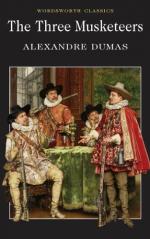|
This section contains 390 words (approx. 2 pages at 300 words per page) |
World of Scientific Discovery on Jacques-Alexandre-Csar Charles
The first we know of Jacques Charles is his appearance as a young man in Paris, where he worked briefly as a minor government official under King Louis XVI. When Benjamin Franklin visited France in 1779, Charles was inspired to study physics. He soon became an eloquent speaker to non-scientific audiences. His lectures and demonstrations attracted notable patrons and helped popularize Franklin's theory of electricity and other new scientific concepts.
But Charles was best known in his day for inventing the hydrogen balloon--and for being the first person to try it out. People had just begun to experiment with hot-air balloons, and Charles realized immediately that hydrogen would work better than hot air, because it is much lighter (as noted earlier by Henry Cavendish). Charles' first balloon was made of silk that was coated with rubber to prevent leaking. After an unmanned flight of some 15 miles (24 km), the balloon landed in a small village, where the peasants--who thought it was some sort of monster from the sky--attacked it with pitchforks and guns. After building a larger balloon, Charles and an assistant made their first ascent in December 1783.
Ballooning, as a science and a sport, quickly took off, and Charles invented most of the equipment that is still used in today's balloons. Fortunately, the French public's infatuation with ballooning saved Charles' life at one point. Because he had once enjoyed the king's patronage, Charles was approached by an angry mob of revolutionaries in 1792. He was able to calm them down by telling stories of his early balloon flights.
Perhaps because of his non-scientific background, Charles published very little of his work. In 1787, while experimenting with hydrogen, oxygen and nitrogen, he showed that, at a constant pressure, the volume of a gas increases in proportion to its absolute temperature. His findings were later duplicated and published by Joseph Gay-Lussac, who had improved upon Charles's experimental procedure. This fundamental concept of gas behavior is now known as Gay-Lussac's law but is still sometimes called Charles 's Law.
In addition to his contributions to ballooning and physics, Charles is credited with inventing some relatively minor but ingenious instruments, such as a device for measuring the angles of crystal (a goniometer). He also invented the megascope, which magnifies large objects, and he improved instruments for measuring specific gravity and for tracking the Sun's rays.
|
This section contains 390 words (approx. 2 pages at 300 words per page) |


